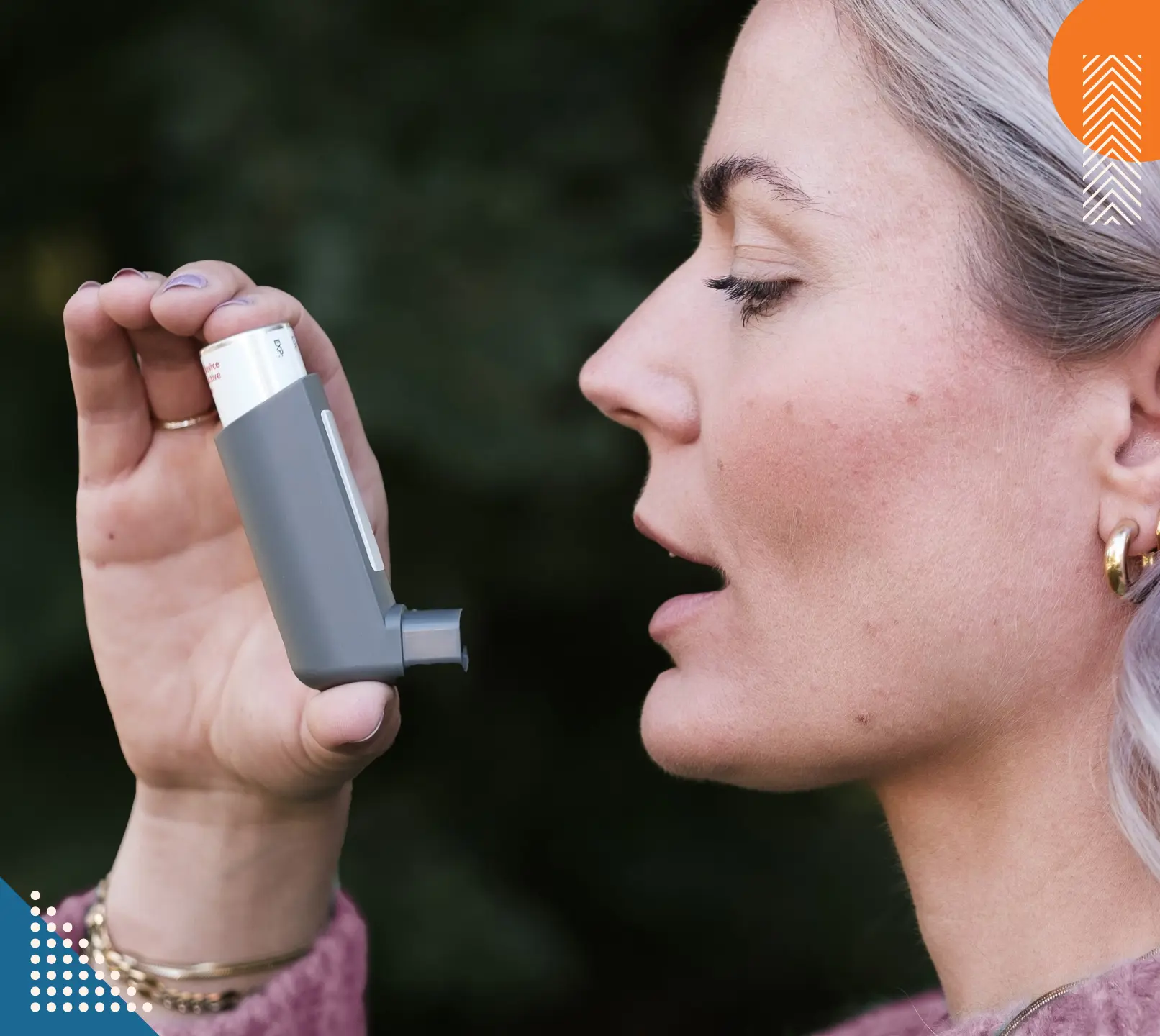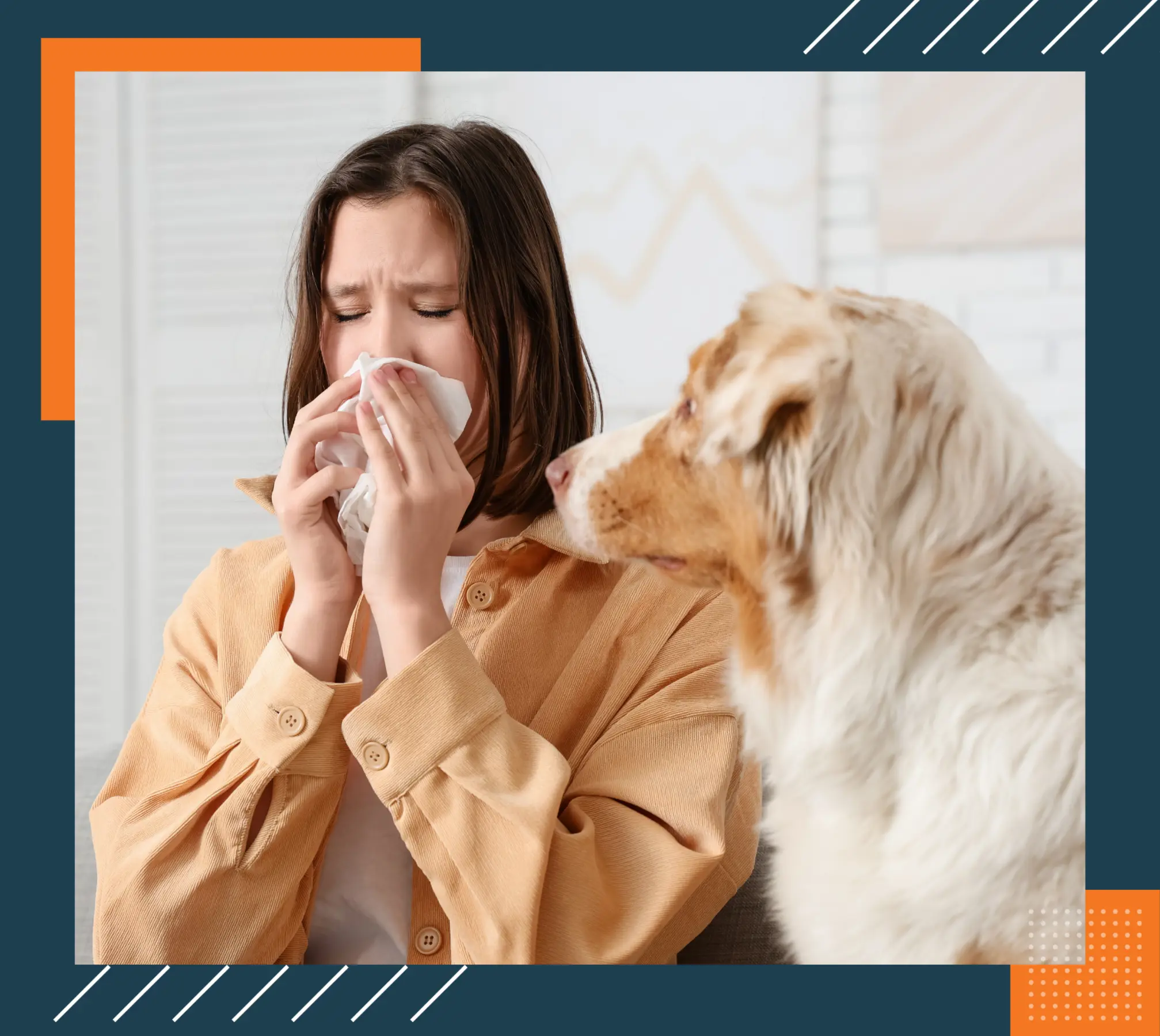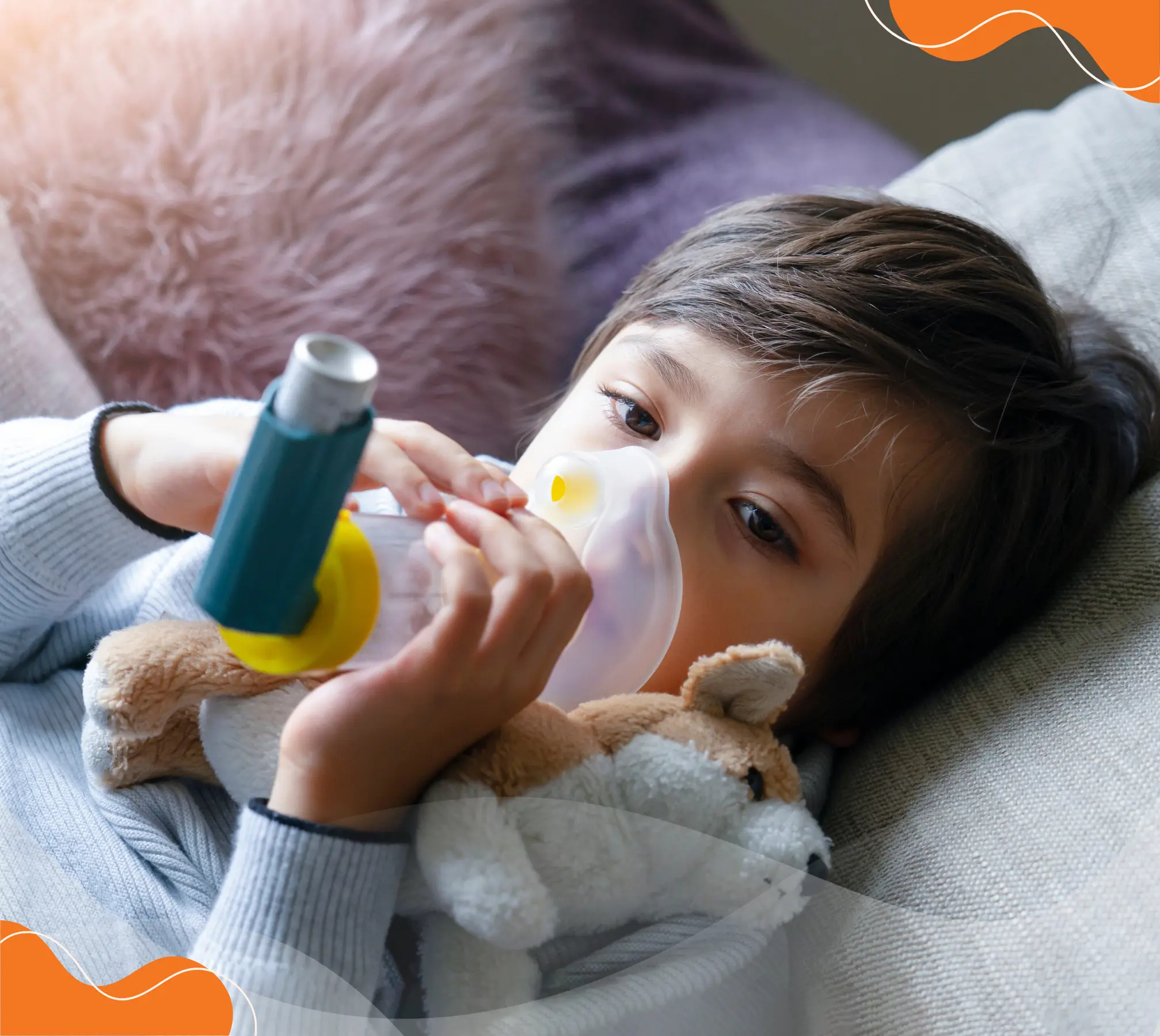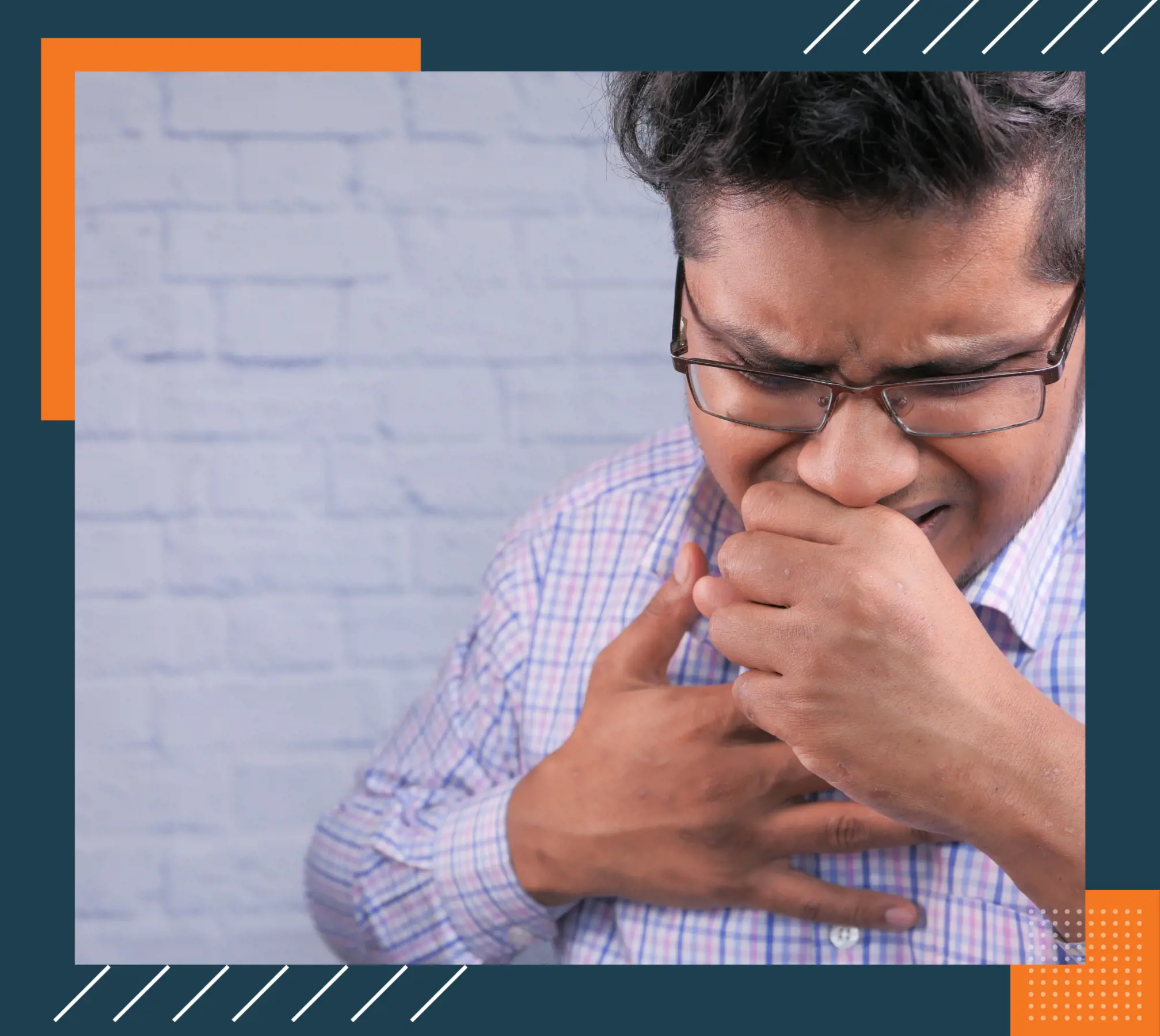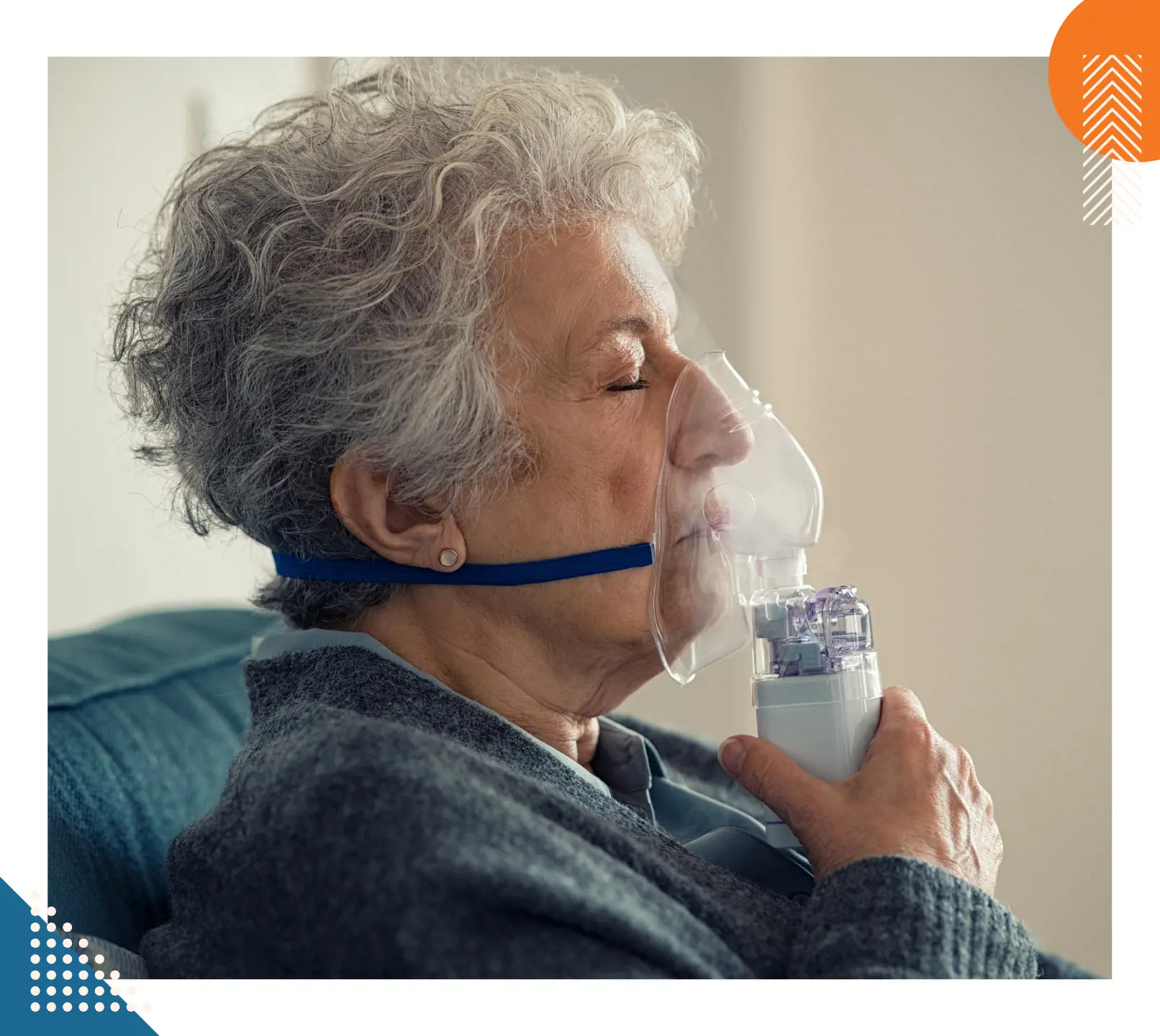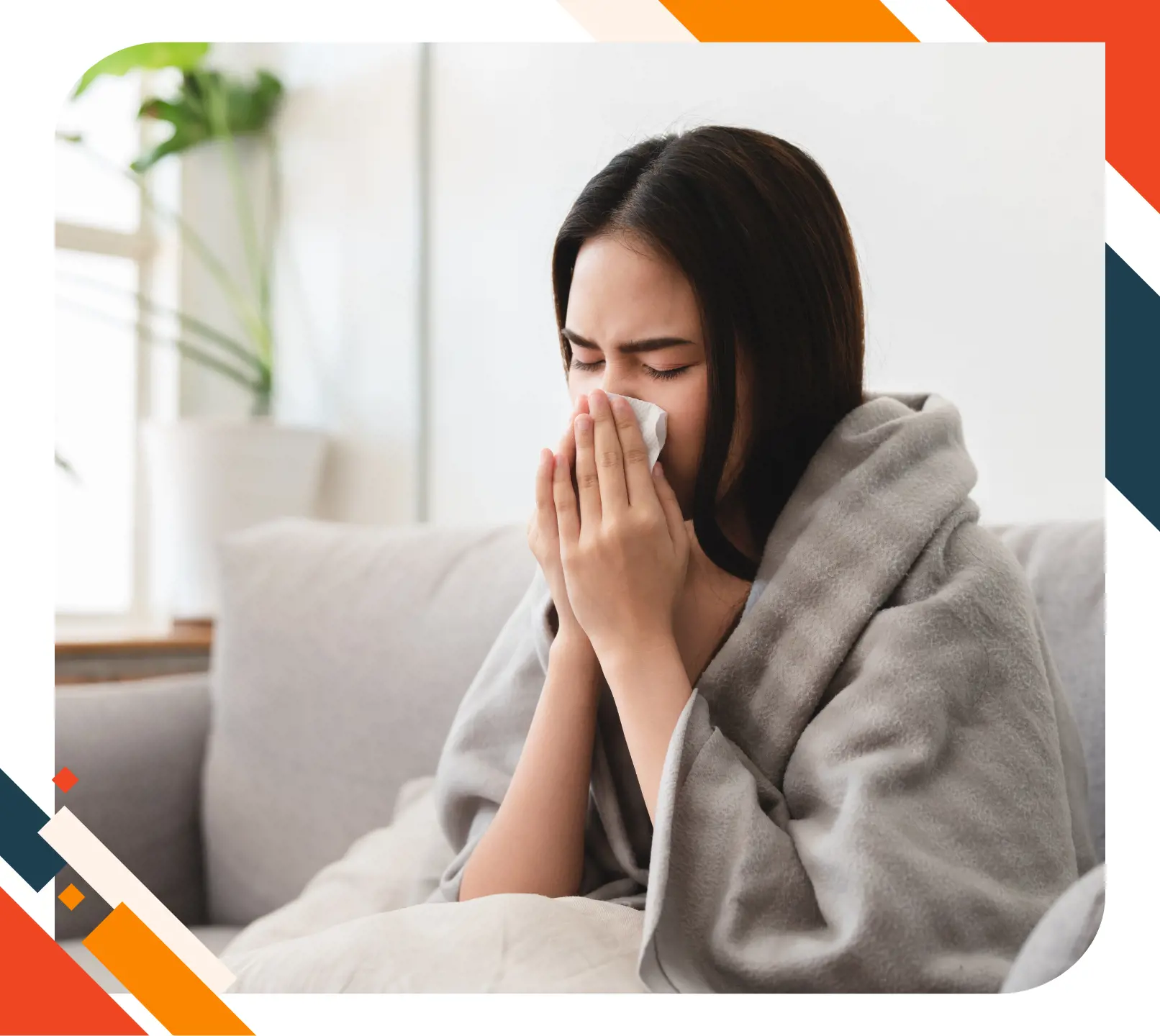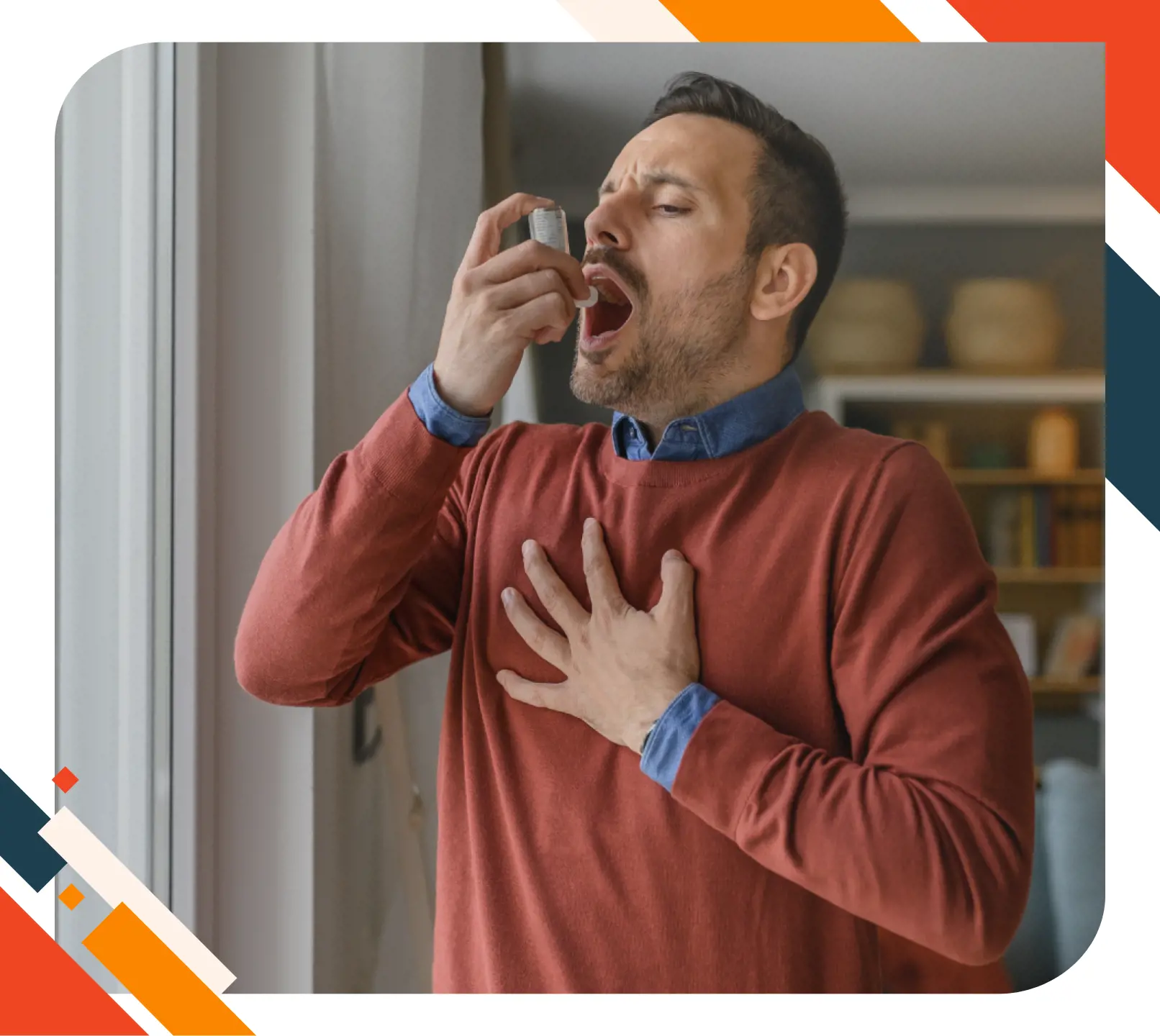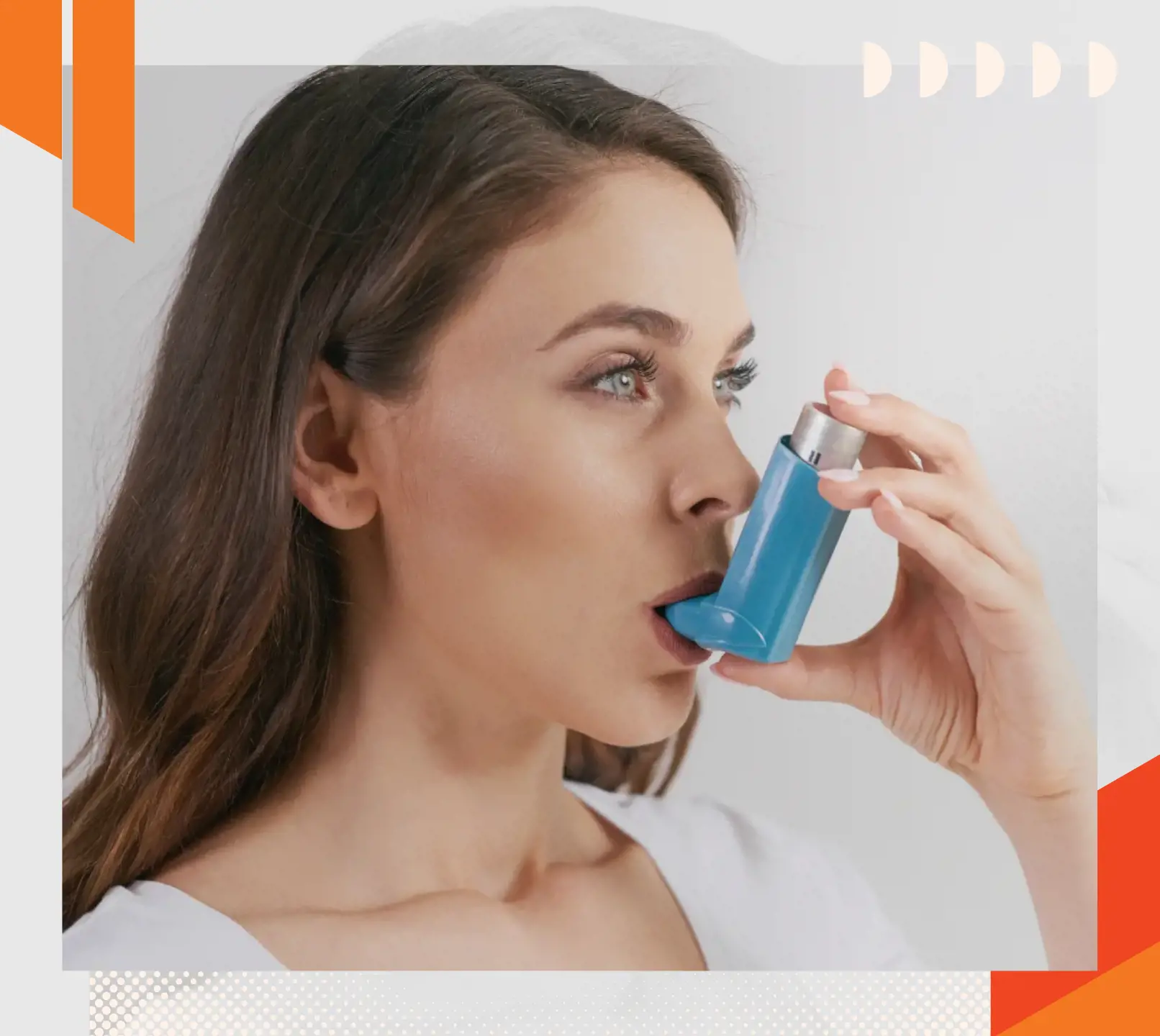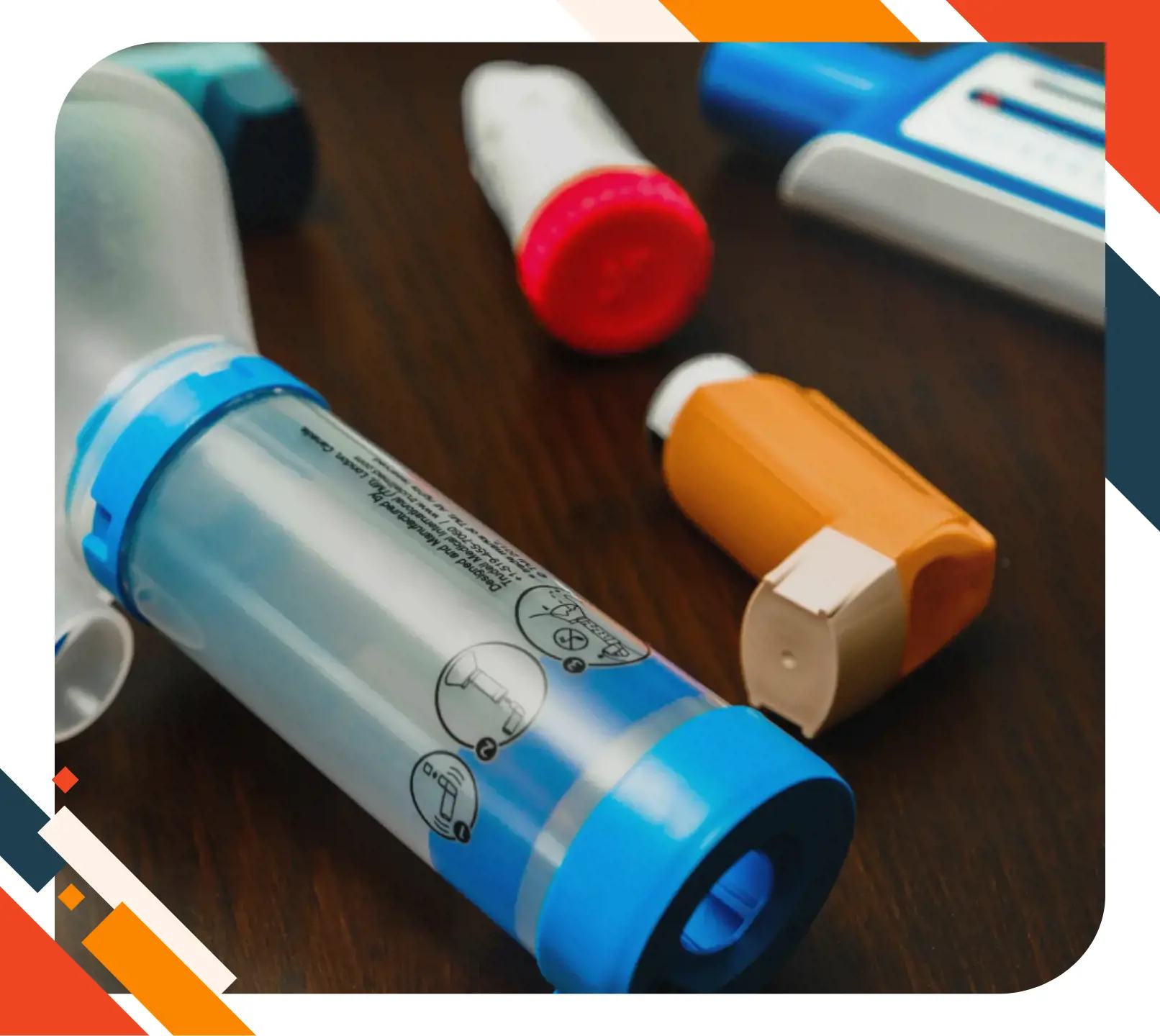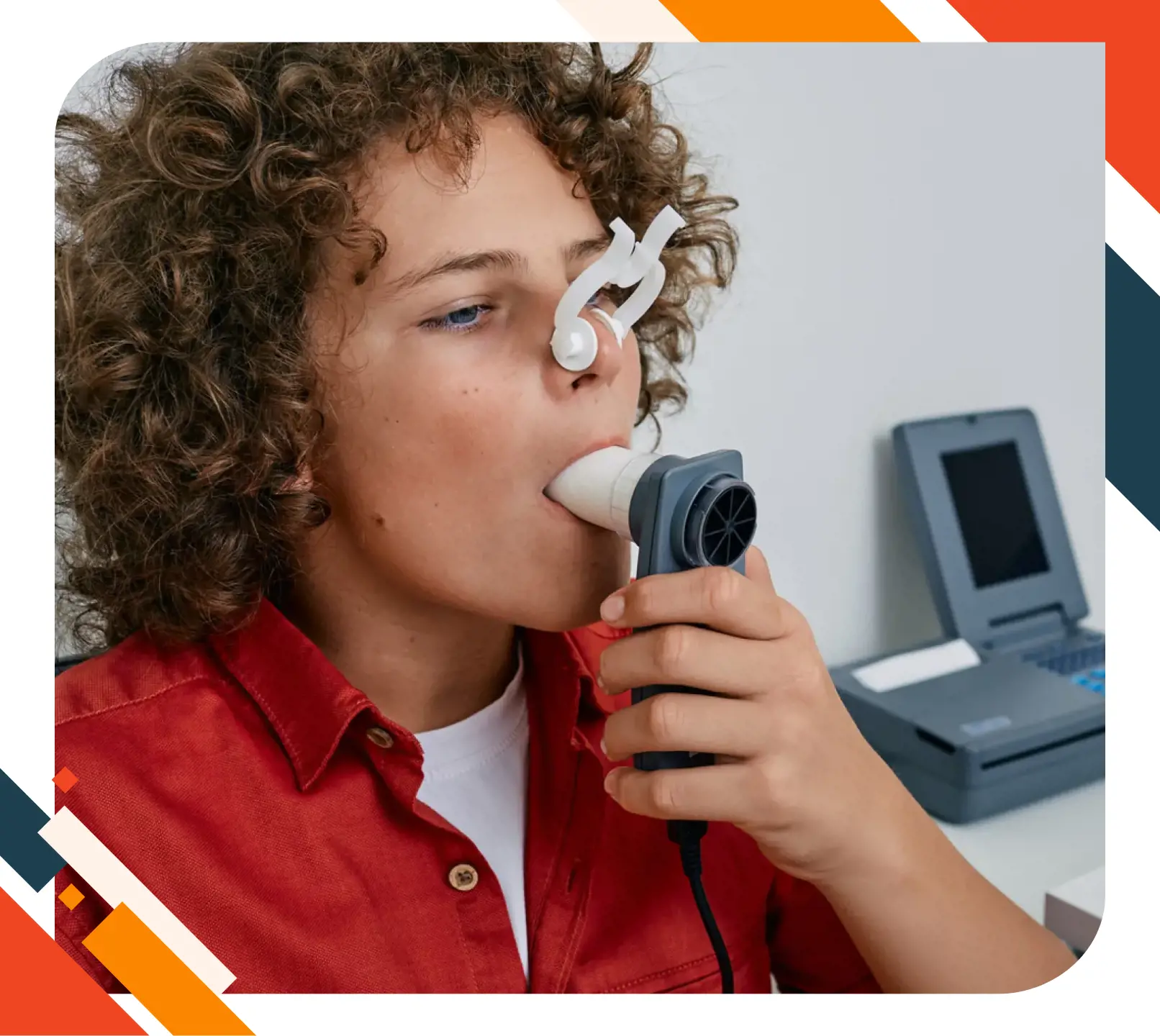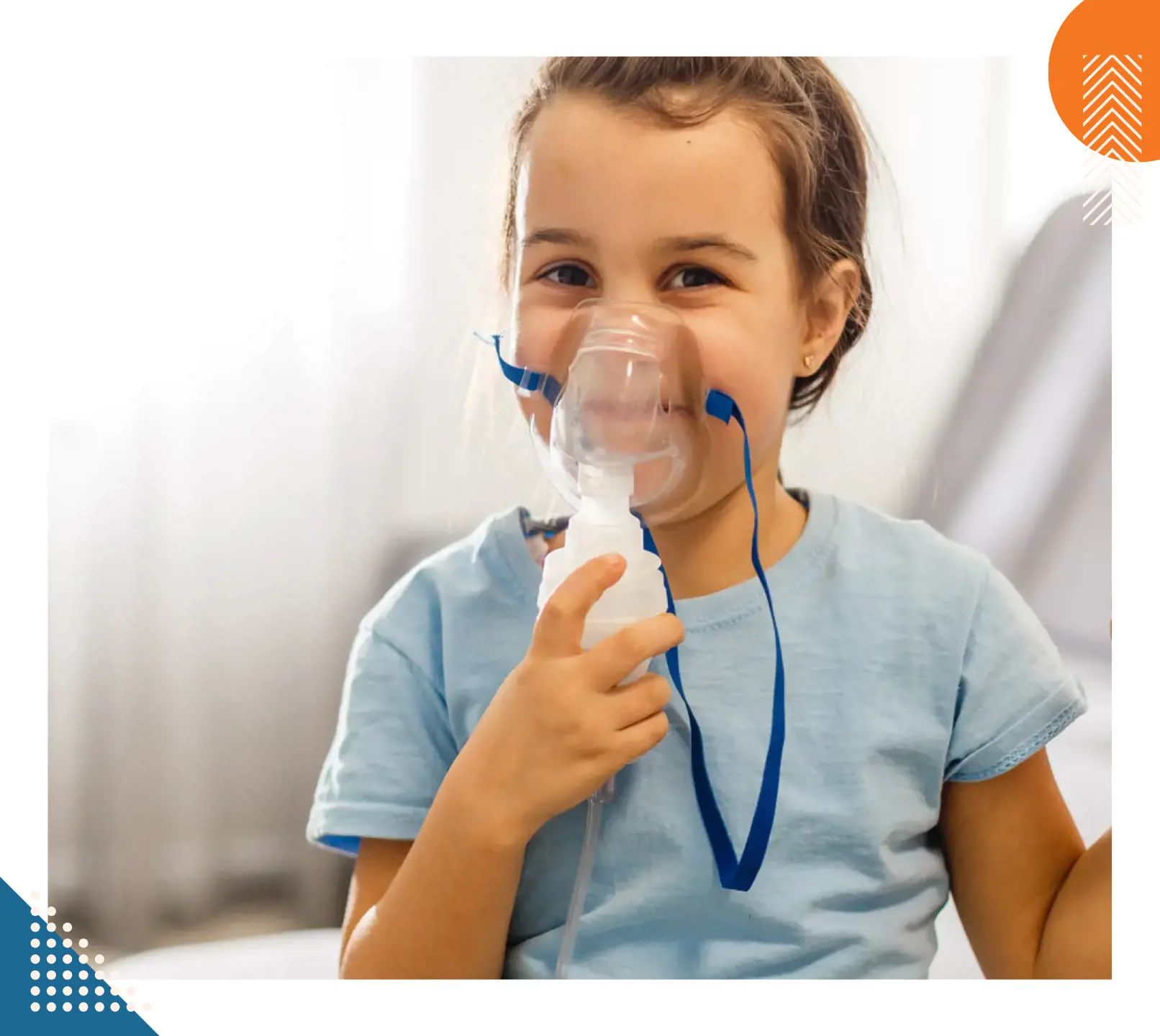Exercise-Induced Asthma: Symptoms, Treatment, and Management
Exercise is important for staying healthy, but for some people it can trigger asthma symptoms. This is called exercise-induced asthma (also known as exercise-induced bronchoconstriction). Understanding the condition, recognising the symptoms, and learning how to manage it can help you stay active while keeping your asthma under control.
This article explains what exercise-induced asthma is, what causes it, and the steps you can take to manage symptoms effectively.
Understanding Exercise-Induced Asthma
What is Exercise-Induced Asthma?
This happens when the airways narrow during or after physical activity, leading to breathing difficulties. It differs from regular asthma because symptoms are brought on specifically by exercise, even if you don’t usually have issues at rest.
It is quite common for most people with asthma to experience symptoms during exercise. However, it can also occur in people without a formal asthma diagnosis.
Causes of Exercise-Induced Asthma
During exercise, especially in cold or dry air, the airways lose heat and moisture. This can cause the muscles around the airways to tighten and the lining to swell, making breathing harder.
Common triggers include:
-
Cold or dry air
-
Airborne pollutants or irritants
-
High pollen levels
-
Poorly controlled underlying asthma
Symptoms of Exercise-Induced Asthma
Common Symptoms
Exercise-induced asthma symptoms usually appear within a few minutes of starting physical activity and may worsen after stopping. Common signs include:
-
Wheezing – a whistling sound when breathing out
-
Shortness of breath – feeling like you can’t catch your breath
-
Chest tightness – pressure or discomfort in the chest
-
Coughing – often during or after exercise
It is quite common for these symptoms to appear or worsen 5-10 minutes after exercise and may not impact on your ability to exercise.
About half of all people with exercise-induced asthma have a refractory period after exercise. This means that they may not experience another episode of exercise-induced asthma for 2-3 hours even if they exercise again.
Severity of Symptoms
The intensity of exercise-induced asthma symptoms can range from mild to severe. For some, it may cause only slight breathlessness, while others may experience more serious breathing difficulties that stop them from exercising.
Symptoms often depend on:
-
The intensity and duration of exercise
-
Exposure to cold, dry air or allergens
-
Whether underlying asthma is well controlled
-
Any recent respiratory tract infections (such as a cold or flu)
Diagnosing Exercise-Induced Asthma
Medical History and Physical Exam
The first step in diagnosing exercise-induced asthma is a detailed discussion with your doctor. They will ask about:
-
When your symptoms occur (before, during, or after exercise)
-
The type of exercise that triggers symptoms
-
Any history of allergies, asthma, or breathing problems
A physical exam may follow, focusing on your lungs and breathing patterns. Your doctor may also check for other conditions that can mimic asthma, such as hayfever, reflux, or vocal cord issues.
Diagnostic Tests
If symptoms suggest exercise-induced asthma, further testing can confirm the diagnosis. Common tests include:
-
Spirometry – measures how much air you can breathe in and out, and how quickly, to detect airway narrowing.
-
Exercise challenge test – involves running on a treadmill or similar activity while monitoring breathing before and after exercise.
These tests help your doctor confirm whether exercise is the main trigger and guide treatment options.
When to See a Doctor for Your Exercise-Induced Asthma
Even if symptoms seem mild, consulting your Myhealth GP is important. As mentioned above, early assessment helps:
-
Prevent complications or worsening symptoms
-
Ensure safe participation in sports or exercise
-
Develop a personalised asthma action plan for your needs
Your doctor can review your triggers, adjust treatment, and guide safe exercise strategies, so you can stay active with confidence.
Treatment Options for Exercise-Induced Asthma
Medications
This is often the first line of treatment for managing exercise-induced asthma.
Common options include:
-
Reliever medications (short-acting beta agonists, e.g., salbutamol) – provide quick relief by relaxing airway muscles. Usually taken 10–15 minutes before exercise.
-
Long-acting reliever medications (long-acting beta agonists, e.g., salmeterol) – help control symptoms over a longer period; often combined with preventer inhalers.
-
Preventer medications (inhaled corticosteroids) – reduce inflammation in the airways and lower the risk of symptoms over time. Typically used everyday, even when you feel well.
Your doctor will tailor the type and timing of medications to your needs, ensuring both safety and effectiveness.
Non-Medication Treatments
Lifestyle strategies can complement medications and help reduce exercise-induced symptoms:
-
Warm-up exercises – gradually increase intensity to prepare your lungs and airways.
-
Breathing exercises – techniques like diaphragmatic breathing can improve airflow and control during activity.
-
Physical therapy or exercise training – guided sessions can strengthen respiratory muscles and improve endurance.
Tips for daily integration:
-
Include a 10–15 minute warm-up before any strenuous activity.
-
Practice breathing exercises for a few minutes each day or before exercise.
-
Choose activities suited to your triggers (e.g., indoor swimming if cold air worsens symptoms).
These combined approaches help you stay active while minimising asthma flare-ups.
Managing Exercise-Induced Asthma
Preventive Strategies
Taking proactive steps can help reduce exercise-induced asthma symptoms:
-
Improve fitness – increasing overall fitness raises the threshold for symptoms, so moderate exercise may be better tolerated.
-
Exercise in warm, humid environments – cold or dry air can trigger symptoms.
-
Avoid triggers – stay away from areas with high allergens, pollution, irritant gases, or airborne particles.
-
Breathe through your nose – helps warm and humidify the air before it reaches your lungs.
-
Consider masks – can filter irritants, though may be impractical during vigorous exercise.
-
Warm-up before activity – prepares your lungs and reduces the risk of symptoms.
-
Cool down after exercise – slow breathing, cover your mouth in cold weather, and do light movements.
-
Quit smoking – smoking increases airway sensitivity; speak to your doctor for support.
Creating an Asthma Action Plan
A personalised asthma action plan is essential for safe exercise:
-
Work with your healthcare provider to create a plan tailored to your triggers and activity level.
-
Include instructions on medication use, warm-up routines, and steps to take if symptoms occur.
-
Review and update the plan regularly based on changes in symptoms or lifestyle.
Monitoring Symptoms
Regular monitoring helps prevent severe attacks:
-
Track your symptoms during and after exercise.
-
Note triggers, severity, and frequency of episodes.
-
Recognise early warning signs, such as wheezing, chest tightness, or unusual fatigue, to take action promptly.
What to Do During an Exercise-Induced Asthma Attack
Early intervention and adherence to your action plan are key to managing exercise-induced asthma safely.
Follow your asthma action plan carefully:
-
Stop the activity immediately and sit upright.
-
Use your reliever medication as prescribed (e.g., short-acting inhaler).
-
Stay calm and take slow, steady breaths.
-
Seek help if symptoms do not improve after 5–10 minutes, or immediately if you experience severe difficulty breathing, lips/fingertips turning blue, or inability to speak in full sentences.
-
Call emergency services (000 in Australia) if the attack worsens or does not respond to medication.
Impact on Lifestyle and Activities
Staying Active with Exercise-Induced Asthma
Having exercise-induced asthma doesn’t mean you need to avoid physical activity. Staying active supports overall health and can even improve lung function. Tips for safe exercise include:
-
Choose suitable activities – swimming, walking, or cycling in warm, humid environments may be easier on the lungs.
-
Use preventive strategies – warm-ups, breathing through your nose, and avoiding triggers.
-
Follow your asthma action plan – always have reliever medication on hand.
-
Monitor symptoms – take breaks if you feel wheezy, tight-chested, or unusually fatigued.
Special Considerations for Athletes
Athletes with exercise-induced asthma can perform at high levels with careful management:
-
Plan training around triggers – avoid cold, dry air or high-pollution environments when possible.
-
Use medication strategically – relievers before exercise and preventers as prescribed.
-
Communicate with coaches – ensure they understand your condition and action plan.
-
Monitor performance and symptoms – track any changes in breathing, endurance, or recovery.
With the right preparation and management, people with exercise-induced asthma can safely enjoy sports, competition, and an active lifestyle.
Should You Stop Exercising?
Having exercise-induced asthma does not mean you should stop exercising. Physical activity offers numerous health benefits, including improved cardiovascular fitness, lung function, and mental well-being. With proper management using preventive strategies, medications, and an asthma action plan, most people with exercise-induced asthma can continue regular exercise safely.
Work with your healthcare provider to:
-
Identify triggers and suitable activities
-
Adjust medication timing for exercise
-
Develop a personalised plan to exercise safely
This approach allows you to stay active, maintain fitness, and enjoy the benefits of exercise without compromising your respiratory health.
See a GP about your Exercise-Induced Asthma today
If your child or you experience symptoms of exercise-induced asthma, it’s important to book an appointment with a GP at a Myhealth Clinic. Early assessment helps confirm the diagnosis, review triggers and treatment options, and develop or update an asthma action plan for safe exercise.
You should see a doctor if symptoms are frequent, worsen during activity, or interfere with daily life. To find a clinic near you, visit Myhealth Clinic Locations.
Early intervention ensures asthma is well-managed, keeping exercise safe and enjoyable.
Helpful Links:
-
Asthma Australia. Diagnosing Asthma. https://asthma.org.au/about-asthma/diagnosis/
-
National Asthma Council Australia. Asthma and exercise. https://www.nationalasthma.org.au/living-with-asthma/resources/patients-carers/factsheets/asthma-and-exercise
-
Better Health Channel. Asthma. https://www.betterhealth.vic.gov.au/health/conditionsandtreatments/asthma
-
Centers for Disease Control and Prevention (CDC). Exercise-induced asthma. https://www.cdc.gov/asthma/exercise.html
-
Better Health Channel. Asthma and Exercise. https://www.betterhealth.vic.gov.au/health/conditionsandtreatments/asthma-and-exercise
-
National Asthma Council Australia. Asthma Medications. https://www.nationalasthma.org.au/living-with-asthma/resources/patients-carers/factsheets/asthma-medications
-
Australian Institute of Health and Welfare. Asthma Overview. https://www.aihw.gov.au/reports/chronic-respiratory-conditions/asthma
-
Asthma Australia. How to Breathe Better During Exercise. https://asthma.org.au/blog/breathing-during-exercise-qa/
-
Asthma Australia. Bodybuilding Helped Reduce Asthma Side Effects. https://asthma.org.au/blog/bodybuilding-reduces-side-effects-of-life-with-asthma/
-
Asthma Australia. Is Swimming Good for People with Asthma? https://asthma.org.au/blog/is-swimming-good-for-asthma-health-benefits/




